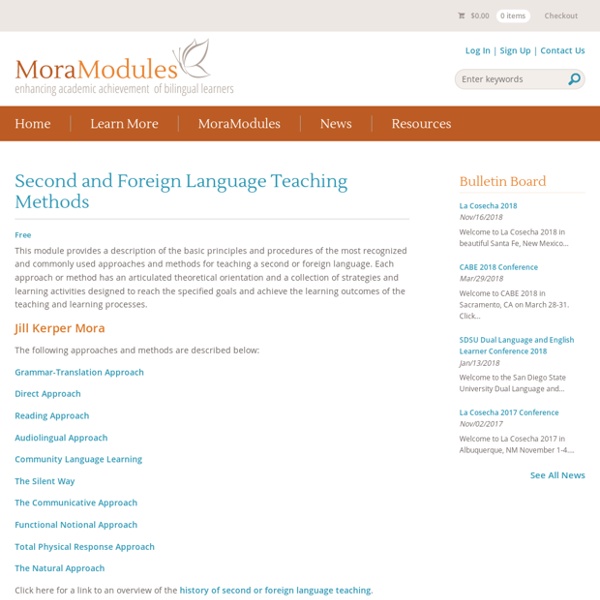Gray - Using Translated First Language Literature in the Second Language Classroom
The Internet TESLJournal Ronald Graymnenomic_2000 [at] yahoo.comBeijing Language and Culture University (Beijing, China) Introduction Finding appropriate literature to teach in the second language (L2) classroom has always been a major challenge. Value of Teaching Literature There are five reasons commonly given for teaching literature in the L2 classroom:It helps students understand and appreciate cultures and beliefs different from their own. Advantages to Teaching Translated First Language Literature One excellent but frequently overlooked type of literature is the translated first language literature of the student. Practical Classroom Implications First language literature used in the second language classroom should have the following characteristics: obviously it should be well known to the students, the translation must be faithful to the original, and it should be accessible, not too long, and tailored to the level of the students. Conclusion References Cao Xueqin (1978).
150 Teaching Methods
Lecture by teacher (and what else can you do!) Class discussion conducted by teacher (and what else!) Recitation oral questions by teacher answered orally by students (then what!) Attachment: 150 Teaching Methods [PDF, 33 KB]
Michael Swan | The influence of the mother tongue on second language vocabulary acquisition and use
(In Vocabulary: Description, Acquisition and Pedagogy, ed. Schmitt and McCarthy, CUP 1997, pp. 156–180) 1 introduction "… contrastive analysis, error analysis, etc., are not simply unrelated to linguistic theory in particular, they are dead meat in general." Oh, well … In this paper I shall consider the ways in which the mother tongue can support, fail to support or actively hinder someone who is learning or using the vocabulary of a second language. "As a learning process, transfer supports the learner's selection and remodelling of input structures as he progresses in the development of his interlanguage knowledge. Before looking at these three areas, it will be useful to consider briefly how languages differ in the ways they encode the world through lexis, and to settle on a definition of crosslinguistic influence. 2 how languages differ "The vodka is all right, but the meat is bad." English French Danish Swedish tree wood (material) wood (small forest) forest arbre bois forêt træ skov träd trä skog 1.
Teaching Methodology
Teaching Approaches and Methodology There are many theories and methodologies ranging from, for example, Total Physical Response to the Silent Approach, which have been used to teach students a second language. However, we shall just focus on one particular methodology. Difficulties First of all, we should outline some of the typical difficulties that are experienced. There are a number of reasons for this, namely: Communicative and cultural language barrier: the JTE and ALT have difficulty understanding each other's intended actions and ideas. (Top of page) Suggested Lesson Planning Approach A very simple yet effective method of teaching is achieved by using the ARC approach. Clarification & Focus stage- e.g. Restrictive Exercise stage- Ss do an exercise as stipulated by the T/ALT to practice grammar structure and form, increase their English accuracy and test and demonstrate their ability on a given language point. A typical lesson might run something like this: CRCAC 1) Using Pictures Key
History of English Language Teaching
Dimitrios Thanasoulas Introduction The English language teaching tradition has been subject to tremendous change, especially throughout the twentieth century. Perhaps more than any other discipline, this tradition has been practiced, in various adaptations, in language classrooms all around the world for centuries. The Classical Method In the Western world back in the 17th, 18th and 19th centuries, foreign language learning was associated with the learning of Latin and Greek, both supposed to promote their speakers' intellectuality. It is widely recognised that the Grammar Translation Method is still one of the most popular and favourite models of language teaching, which has been rather stalwart and impervious to educational reforms, remaining a standard and sine qua non methodology. Gouin and Berlitz - The Direct Method The last two decades of the nineteenth century ushered in a new age. I stretch out my arm. The Audiolingual Method The "Designer" Methods of the 1970s Suggestopedia
E6-91-13-01.pdf



